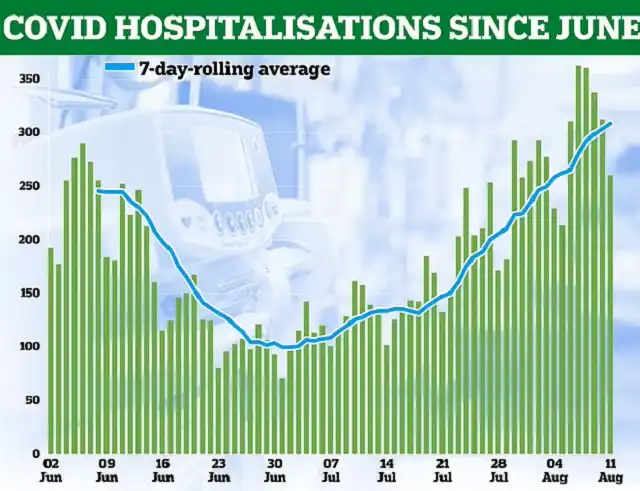What Are the Key Points in the CDC’s First BA.2.86 Variant Risk Assessment?
- Normal Liver Cells Found to Promote Cancer Metastasis to the Liver
- Nearly 80% Complete Remission: Breakthrough in ADC Anti-Tumor Treatment
- Vaccination Against Common Diseases May Prevent Dementia!
- New Alzheimer’s Disease (AD) Diagnosis and Staging Criteria
- Breakthrough in Alzheimer’s Disease: New Nasal Spray Halts Cognitive Decline by Targeting Toxic Protein
- Can the Tap Water at the Paris Olympics be Drunk Directly?
What Are the Key Points in the CDC’s First BA.2.86 Variant Risk Assessment?
- Should China be held legally responsible for the US’s $18 trillion COVID losses?
- CT Radiation Exposure Linked to Blood Cancer in Children and Adolescents
- FDA has mandated a top-level black box warning for all marketed CAR-T therapies
- Can people with high blood pressure eat peanuts?
- What is the difference between dopamine and dobutamine?
- How long can the patient live after heart stent surgery?
What Are the Key Points in the CDC’s First BA.2.86 Variant Risk Assessment?
Amid the recent public discussion surrounding the BA.2.86 variant of the novel coronavirus, the Centers for Disease Control and Prevention (CDC) in the United States released its inaugural risk assessment report on Aug23.
At a time when our understanding of this new variant is still limited, the report provides some insights and inferences.

(Source: CDC official website)
Key Takeaways from the U.S. CDC Assessment:
1.Effectiveness of Existing Measures:
Based on current knowledge, the CDC suggests that existing COVID-19 testing and treatment methods still appear effective against the BA.2.86 variant.
However, this variant may have a heightened ability to evade immunity from vaccinations and prior infections.
Scientists are assessing the protective efficacy of upcoming vaccines targeting XBB 1.5.
The CDC’s current assessment is that these new vaccines should still be effective in preventing severe illness and hospitalization.
At present, there is no evidence from existing data to suggest that this variant leads to more severe symptoms.
2. Transmission Similarity:
The CDC notes that while the virus’s transmission potential is not yet clear, its mode of transmission remains consistent with other variants.
Therefore, recommendations for personal protection, such as vaccination, wearing well-fitted masks, increasing ventilation, and practicing hand hygiene, remain the same.
Additional Information Available to the CDC:
1. Case Data:
As of the CDC’s assessment on August 23rd, there have been a total of only 9 sequenced cases of BA.2.86 globally.
These include 3 cases in Denmark, 2 in South Africa, 2 in the United States, and 1 each in Israel and the UK. In the U.S., apart from the previously reported case at the University of Michigan Hospital, another case was identified at Dulles International Airport in Virginia.
The CDC conducted anonymous voluntary pooling testing for incoming travelers, making it challenging to trace specific individuals who may have been infected with BA.2.86.

(Source: CDC official website)
2. Regional Presence:
The presence of this variant in multiple regions is considered evidence of international transmission of the new variant.
Due to a significant decrease in COVID-19 sequencing data this year compared to previous years, it suggests that many new variants may have been circulating for some time before being discovered.
However, the CDC notes that recent increases in hospitalization data in the United States are unlikely to be linked to BA.2.86.
3. Pathogenicity:
It remains unclear, but the CDC is monitoring areas where BA.2.86 has appeared, primarily looking for any increase in hospitalization rates.
Thus far, no such increase has been observed, but it is too early to draw definitive conclusions.
4. Wastewater Monitoring:
Initial indications of the presence of BA.2.86 have been observed in routine wastewater samples in the United States.
5. Viral Genomics:
BA.2.86 has over 30 mutations compared to the dominant Omicron BA.2 from early 2022. In comparison to XBB 1.5, which dominated in 2023, BA.2.86 has over 35 mutations.
This level of variation is similar to the differences between the original Omicron strain and previous variants such as Delta.
6. Immune Impact:
Virus samples have not yet been widely used for more reliable laboratory antibody testing, and it’s too early to determine its real impact on immunity.
Nearly all Americans have antibodies from vaccination, past infection, or breakthrough infections, which are likely to continue providing some level of protection, including against severe disease, against new variant viruses.
Challenges in Monitoring COVID-19 Trends:
According to infectious disease expert Paul Hunter from the University of East Anglia, only about one percent of COVID-19 cases are currently being tested, with only a small fraction of those samples undergoing genetic sequencing. This limited testing makes it challenging to fully understand the situation with BA.2.86.
Based on data from the UK government as of mid-August, confirmed COVID-19 cases and hospitalizations have been on the rise, but the medical community generally attributes this increase more to the EG.5 variant’s widespread transmission.
The World Health Organization also stated in its recent assessment that overall evidence suggests EG.5 does not pose additional public health risks compared to other Omicron variants currently in circulation.

(UK COVID-19 hospitalization data, source: Daily Mail)
Microbiologist Simon Clarke from the University of Reading in the UK offers an alternative perspective, suggesting that various signs indicate BA.2.86 has been circulating globally for quite some time.
However, the absence of a significant increase in hospitalization data globally, assuming the virus has been widely circulating, might be a reassuring signal that our vaccines continue to provide effective protection.
As reported on Aug 23, South Africa identified two cases of BA.2.86, sampled as early as July 24th and 28th. Switzerland also detected BA.2.86 in wastewater samples from August 5th and 6th.
What Are the Key Points in the U.S. CDC’s First BA.2.86 Variant Risk Assessment?
(source:internet, reference only)
Disclaimer of medicaltrend.org
Important Note: The information provided is for informational purposes only and should not be considered as medical advice.



